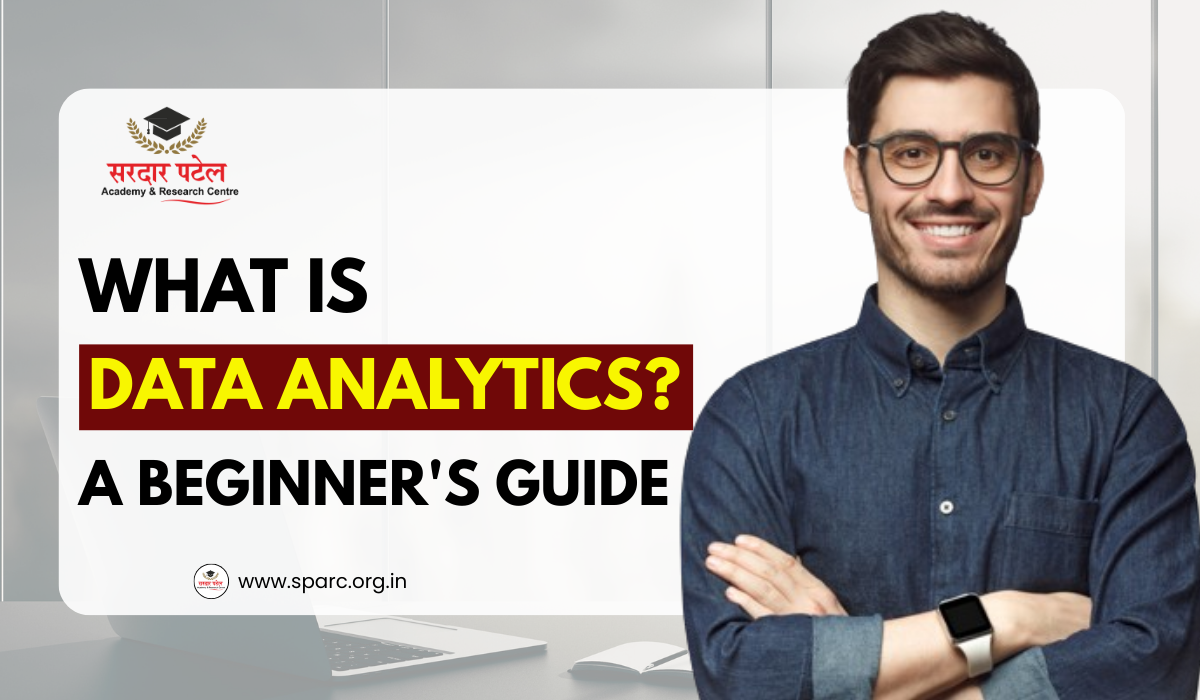In this age of modernization, data is used everywhere- from social media trends to the health sector. But not every kind of data is useful to us. To make data useful and valuable, we require data analytics. If you are keen to know more about this fascinating field, here is a complete beginner-friendly guide. You can follow it in any way, to build a future-proof career or just to build knowledge.
What is Data Analytics
Data Analytics is a process of converting raw data into useful and valuable data. The goal of data analytics is to provide the user with some real information and knowledge that would help them to make better decisions and policies for their organization. It targets the area of not doing any guesswork and focuses on some real business. Data Analytics, in other words, follows the new trends going on in the market and in various spheres of life.
Why is it important in today’s world?
Data Analytics includes all the sectors- whether it’s sports, entertainment, hospitals, education, politics, markets, or government, it is followed everywhere, and, most importantly, the need for data analytics is increasing day by day.
We use data analytics to:
- Solve and identify problems and complications.
- Make Smart, Quick, Valuable decisions.
- Know about the ongoing patterns in that particular industry.
- Understand the Customer’s behavioral patterns and their Needs.
- Improvise and improve efficacy and efficiency.
- To get in touch with the forthcoming troublesome issues at a very early stage.
Types of Data Analytics.
Generally, Data Analytics is divided into four types: Descriptive, Diagnostics, Predictive, and Prescriptive.
- DESCRIPTIVE ANALYSIS
a) In Descriptive Analysis, questions like ‘what happened?’ are covered.
Example- traffic analysis, sales report, funds report, monthly income report, etc.
- DIAGNOSTIC ANALYSIS
a) In Diagnostic Analysis, question like ’why did it happen?’ is covered.
Example- Analyzing the profits and the loss in a business, analyzing the changes in the sales and marketing trend, following the change in the number of admissions in the years, following the change in the reviews or prices, etc.
- PREDICTIVE ANALYSIS
a) In Predictive Analysis, questions like ‘what will happen next?’ are covered. Basically, we predict the future through our analysis.
Example- Predicting future sales based on historical data.
- PRESCRIPTIVE ANALYSIS
a) In Prescriptive Analysis, questions like ‘what should be done now?’ are covered.
Example- Telling marketing strategies to boost engagement.
Technologies Used
Beginners should always start with Basic tools and master them first, and then can continue with intermediate to advanced tools and platforms. A few of the tools required to study Data Analytics are:
- MS Excel
A fantastic tool for managing your basic tools and knowledge, and you can even master it at an advanced level. There are a few online courses also available to master Excel. - SQL (Structured Query Language)
It is usually used to manage data by using databases, and is also used to manipulate the data. - Python
The most commonly used programming language these days is Python. It is used in data analysis and machine learning. - Tableau
A tool used in visualizing the data and turning it into reports.
Uses of Data Analytics
Data Analytics is used in almost every sector these days. A few of the real-life examples are listed below:
- TRANSPORTATION
Trying to reduce the oil consumption by tracking it daily and comparing it with the history.
- SPORTS
Comparing the team’s performance by managing and keeping the statistics of the players’ records.
- FINANCE
Analyzing, detecting, and predicting fraud or risks in the credit sector, etc.
- HEALTHCARE
Predicting diseases and giving personalized treatments to patients, also tracking their growth and performance in comparison with the previous reports.
- RETAIL
Analyzing purchase patterns and noticing growth in the business.
A Guide to start learning Data Analytics
- Start with the basics
: a) Understand the key concepts first and the difference between the different types of data analytics.
b) Study the basics of data statistics as well.
- Time to start with some real data now
a) Use free websites and basic tools to master the sample data sets available on the internet
b) You can even visit some government-based websites as well
- Master the languages
a) Pick a language or a tool
b) Start with MS Excel, Google Sheets, and gradually go on to Python, SQL, etc.
- Buy Online Courses
a) Platforms like Coursera, Udemy, etc, are available that are beginner-level and easy to understand.
b) You can even visit YouTube to access the courses for free if the motive is just to gain knowledge and to learn skills.
- Start Internships and Real-World Projects
a) First, analyze the sector that you want to enter.
b) Prepare reports and do the statistics to understand the concept in depth.
c) Start finding internships or jobs to get hands-on experience.
- Be Aware
a) Stay curious to learn new methods and technologies
b) Study more and more blogs, articles, etc, on Data Analytics only to stay in touch with forthcoming developments
c) Prepare as many reports as you can.
CONCLUSION
Data Analytics is not just mathematics, statistics, or programming. It is much more than what we think. It’s a versatile skill that every student must be aware of, whether you are from a health background, the education sector, or the industrial sector; one should always know about Data Analytics.
It opens a new world of opportunities and perspectives. Understanding Data Analytics will open your mind to innovations, smart decision-making, and discovery.
